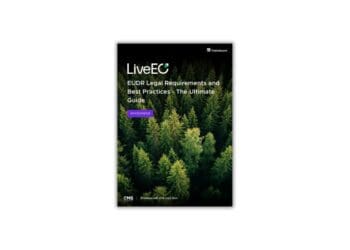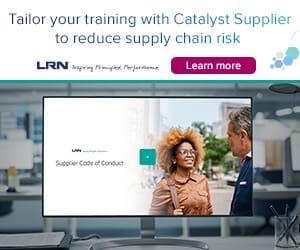While many companies are adding chief sustainability officers to their C-suites, environmental impact doesn’t require a dedicated position. Author Marilyn Waite introduces the SURF framework — examining supply chain, user experience, relationships and future planning — as a tool for organizations to embed sustainable practices throughout their operations even without a dedicated CSO.
Employee demand for environmentally sustainable business practices is undeniable. More than half of workers (52%) have considered leaving their jobs over the poor social and environmental impact of their employer, according to an Upright Project survey. And younger workers are interested in jobs that have a net good impact on the environment: More than 70% of Millennial and Gen Z workers say a company’s environmental policies are important to them when vetting a potential employer, according to Deloitte.
Some companies are responding to this new differentiator in the workplace by creating a new C-suite position: chief sustainability officer, a job that sits at the nexus between business and sustainability.
But driving sustainability is not reserved for positions that contain the word “green,” “ESG,” “responsible,” “environment,” “social” or “sustainability” in the job title. Businesses can have a positive sustainability posture even without a CSO.
The SURF framework
Making a positive impact on sustainability requires businesses to adhere to the four pillars of sustainable development: society, the environment, the economy and intergenerational equity.
This means businesses must ensure that:
- Societal well-being needs, such as safe working conditions, are met.
- Practices that are the most favorable to the planet’s health and ecosystems are adopted.
- Products and/or services provide good value for money, considering environmental and social externalities.
- A long-term outlook for safeguarding the future is applied.
Companies can embed sustainable development into their foundations by using the SURF framework (supply chain, user, relations and future) as a tool to benchmark their efforts. Let’s look at each component of the SURF framework and consider some practical questions businesses can ask themselves to ensure positive impact.
S: Supply chain
From the components used to assemble a computer to the choice of paper used in a typical office environment, the supply chain is arguably the most all-encompassing and challenging sustainability issue to address for a business. Specific questions businesses can ask themselves about their supply chain include:
- What efforts are made to procure products and services from underrepresented communities?
- Is the transportation system (for delivery, staff, etc.) sustainable?
- Are renewable resources used instead of fossil fuels?
- Is the financial supply chain, including choice of bank and employee retirement benefits, aligned with sustainability?
U: User
Even with the best intentions, sustainability efforts can fall short if the user does not use the product or service in a sustainable manner. An energy-efficient light bulb is probably less efficient if the user keeps it on when they are away. Specific questions businesses can ask themselves about their user include:
- What is the consultation and communication process for creating products and services that promote sustainability for the user and during the use phase?
- Are there take-back programs for products to be recycled?
- Are sustainable use methods effectively communicated to users (such as water and energy efficiency and methods to extend the useful life of a product, including care methods)?
R: Relations/relationships
Creating and maintaining positive relationships — both external and internal — contribute to the sustainability of products and services. Good relations are present if workers are paid fair wages and provided the opportunity to make a positive difference in their community. Specific questions businesses can ask themselves about their relations include:
- Does pollution disproportionately and adversely impact vulnerable communities, historically marginalized communities or any subset of a population based on demographics?
- Is sustainable development training available to personnel?
- Is the company a part of a sustainability network (local, international, etc.)?
- How are the following dealt with in the facility: psychological health, health risks tied to working shifts and absenteeism?
F: Future generations
The notion that we are responsible to future generations is one that keeps us questioning the impact of our operations. Do we have a 10-year plan? Or a 50-year plan? It is long-term thinking that sets sustainable development apart from previous social and environmental considerations. Specific questions businesses can ask themselves about future generations include:
- Has the company undertaken a backcasting exercise?
- How does the work facility contribute to generational planning?
- Have the needs of different generations been taken into consideration in the workplace (including mobility considerations, parenting schedules, etc.)?




 Marilyn Waite
Marilyn Waite








